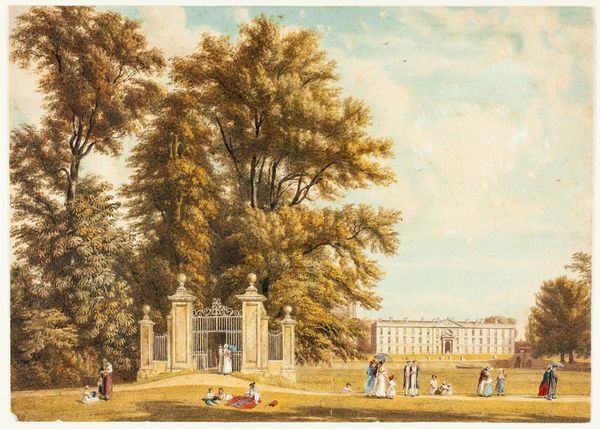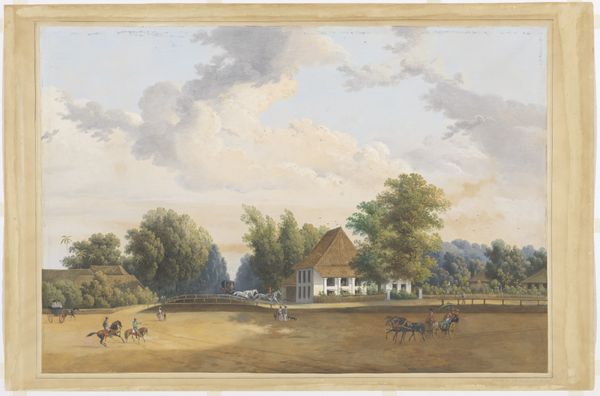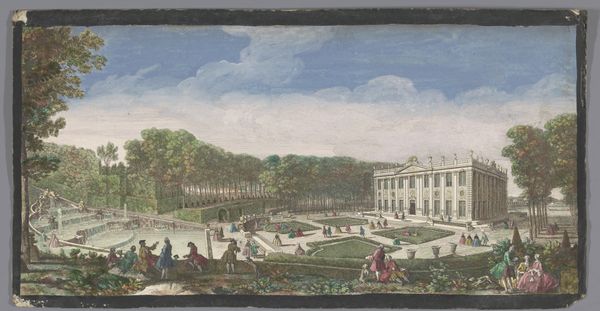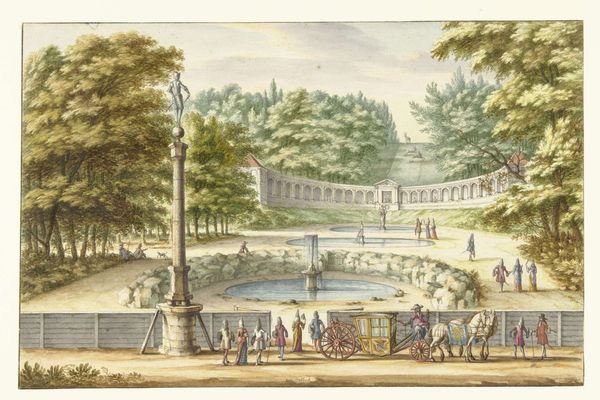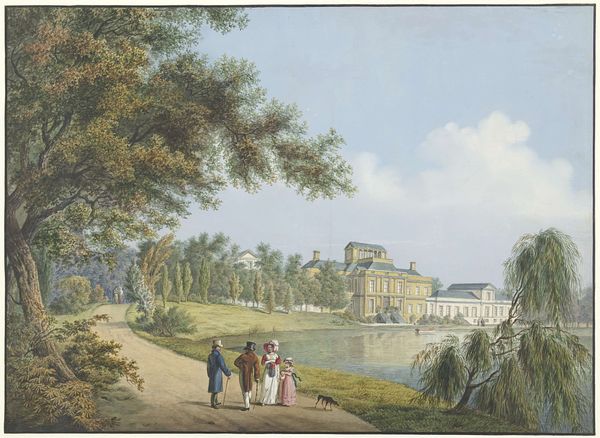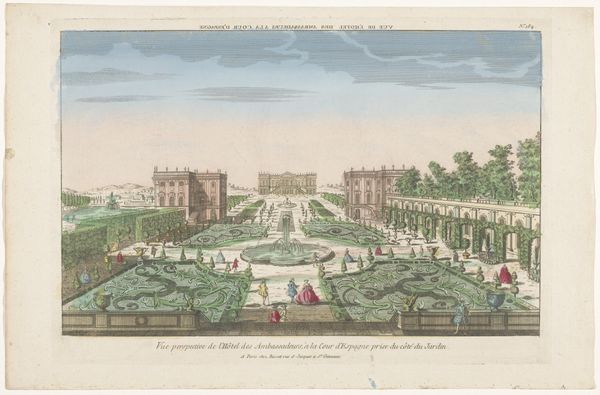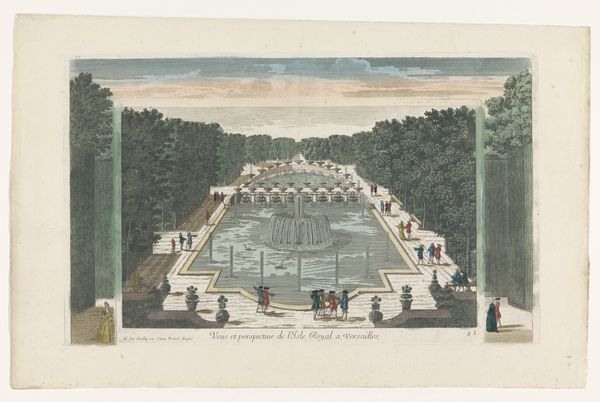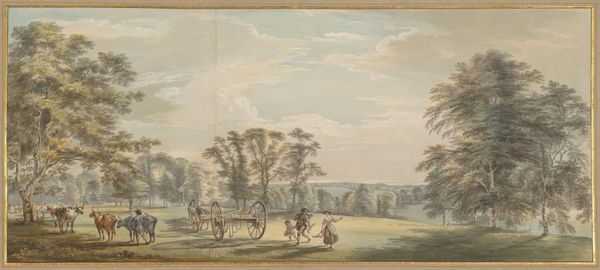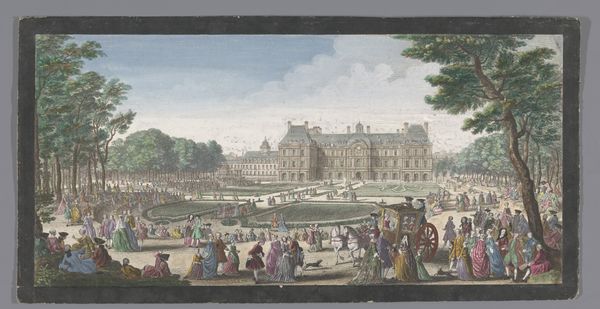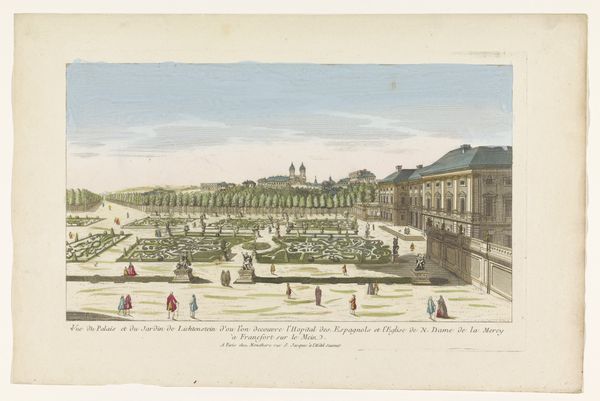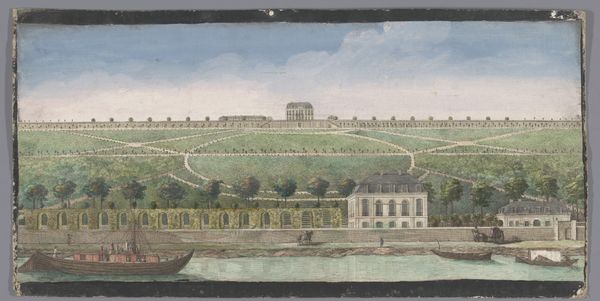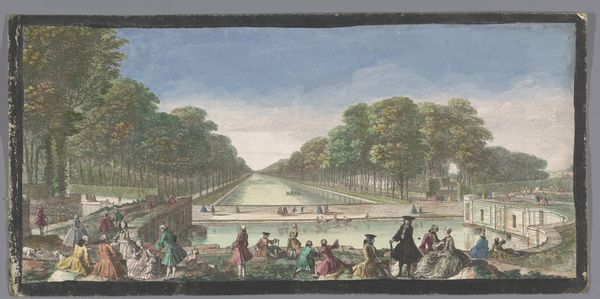
Dimensions: overall (oval): 44.2 x 52.7 cm (17 3/8 x 20 3/4 in.)
Copyright: National Gallery of Art: CC0 1.0
Curator: Here we have Nicolas Pérignon's circa 1780 watercolor drawing, "The Potager of the Hôtel de Valentinois in Passy." A view of a formal garden near what was then the outskirts of Paris. Editor: Ah, it has such a placid, almost dreamy air. The pale blues and greens give it a gentle melancholy, doesn't it? It reminds me of a memory fading at the edges. Curator: Note how the symmetry of the layout creates a sense of order and control, almost like a stage set. Formal gardens like this became popular in France during the 17th and 18th centuries as symbols of power, demonstrating humanity’s ability to tame nature. Editor: Right, but within that formality, look at the figures strolling along the pathways, their clothing almost theatrically opulent against the green backdrop. They seem almost like actors placed deliberately in this organized space. Are they enjoying nature, or performing for it? Curator: An excellent question! These meticulously crafted spaces embodied cultural values, visually encoding status. Water features, for example, and sculptures reinforced messages about authority, progress, and enlightenment. Editor: It’s interesting how such deliberately arranged spaces seem designed to create a specific psychological effect, isn't it? A sense of harmony, perhaps? Though, if you dig a little deeper, it’s a harmony enforced through very human means… through labor, control, resources. Curator: Indeed. Consider that this potager, or kitchen garden, likely provided produce for a wealthy household. Such carefully orchestrated spaces were potent symbols, broadcasting refined taste and immense resources to those fortunate enough to experience it. The image presents an opportunity to examine class structures through a materialist approach. Editor: The choice to use watercolor adds a subtle layer of transparency; as though we, too, are peering through time, witnessing a world constructed carefully, then rendered here so ethereally. Thank you for inviting us to reflect upon such fascinating history! Curator: Thank you, our journey has just begun!
Comments
No comments
Be the first to comment and join the conversation on the ultimate creative platform.
